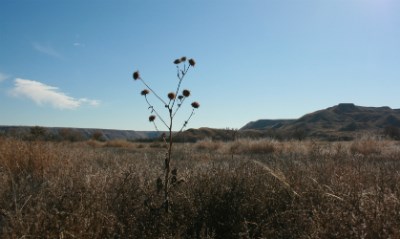
NPS Photo/ J. Stegmann The High Plains lie in the rain shadow of the Rocky Mountains. As winds from the west meet the mountains, they rise, cool and drop much of their moisture on the high peaks, leaving little for the regions further east. Luckily for the Texas Panhandle, air masses from the southeast and the Gulf of America can bring some moisture to the dry prairies. A Complex Ecosystem The Canadian River cuts a wide canyon across the dry, windswept High Plains. Due to low rainfall, abundant sunshine and winds that dry out the land, the short grass prairie ecosystem of the Texas Panhandle provides a glimpse for modern visitors of what this area was like before fences and roads divided the region. There are several key species of grasses that make up the shortgrass prairie community. Around Lake Meredith, Buffalograss, Little Bluestem, Switchgrass and Sideoats Gramma are easily identified. You can read more about these abundant prairie grasses.
Key to the survival of the prairie ecosystems is disturbance. Drought, wildfire, and grazing by large herds of mammals caused patterns of natural disturbance which kept woody plants (trees and shrubs) from succeeding and replacing the grasslands with forests.
|
Last updated: February 18, 2025
